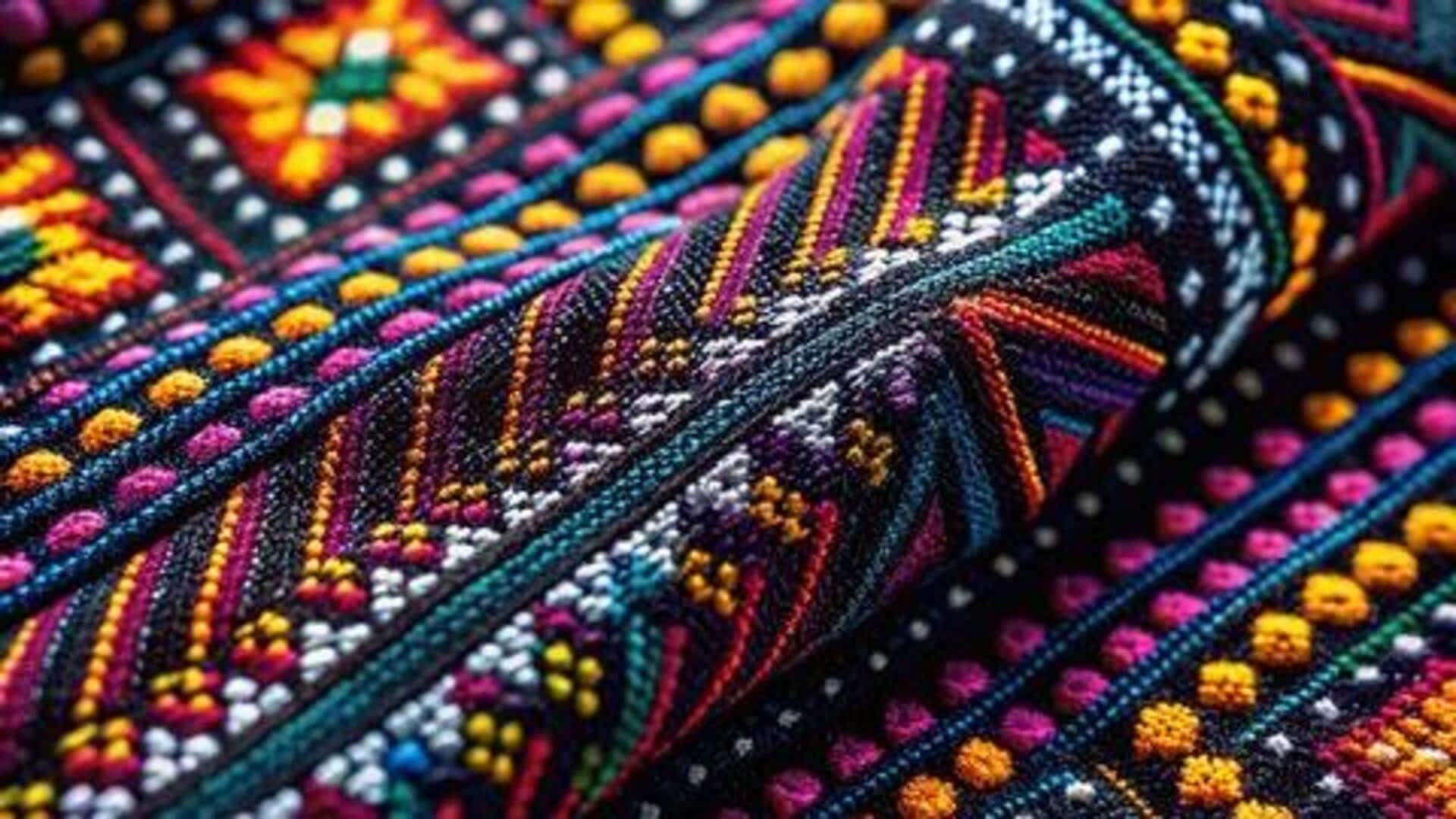
All about African embroidery
What's the story
From intricate stitching techniques, African embroidery tells stories of the continent's diverse cultures and histories. Passed down through generations, each stitch tells a story of its own. Not just a means of expression, the art form also acts as a cultural identifier for various communities across Africa. Here are some timeless techniques that continue to captivate and inspire artisans around the world.
Geometric designs
Geometric patterns in African embroidery
Geometric patterns are common in African embroidery, often representing various elements of life and nature. These designs may include basic shapes like triangles and squares or intricate interlocking patterns. Each shape carries certain meanings (like fertility or protection), which makes them important beyond their decorative value. Artisans employ these patterns to send messages or narrate stories, adding layers to the embroidered pieces.
Color palette
Use of vibrant colors
The use of vibrant colors is a hallmark of African embroidery. Bright hues like red, yellow, blue, and green are commonly used to create striking contrasts and highlight intricate designs. The choice of colors often reflects cultural significance or personal preferences within different communities. For instance, certain colors may be associated with specific ceremonies or events, adding another layer of meaning to the embroidered work.
Symbolic elements
Symbolic motifs in stitching
Symbolic motifs are an essential part of African embroidery, signifying cultural beliefs and traditions. Animals, plants, and abstract symbols are some of the common motifs, which carry specific meanings in different communities. Artisans carefully select these elements to represent their heritage or send specific messages through their work. The use of symbolic motifs adds depth and context to each piece.
Traditional methods
Techniques passed down generations
Many traditional stitching techniques have been preserved over the years because of their cultural significance in African societies. Techniques like chain stitch or cross-stitch are commonly used across various regions but may differ slightly depending on local customs or materials at hand for artisans' use during creation processes involved with these artworks' production stages themselves too!